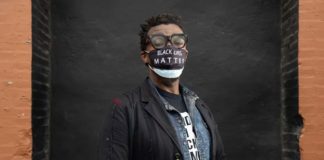
Paige Kieffer
June is right around the corner, and it’s a time when rainbow flags will be flying high and waved proudly as the LGBTQ+ community comes together to reflect on the past year and celebrate the lesbian, gay, bisexual, transgender and queer communities.
Pride festivities across the world take time to honor and remember victims of AIDS, so it’s a good time to remember the AIDS epidemic isn’t over.
According to the UK-based nonprofit Avert, HIV (human immunodeficiency virus) is believed to have organized in Kinshasa in the Democratic Republic of Congo around 1920 when HIV crossed species from chimpanzees to humans. An HIV infection can progress to the potentially life-threatening condition of AIDS (acquired immunodeficiency syndrome).
According to the Mayo Clinic, HIV is a sexually transmitted infection that can be spread by contact with infected blood, semen, vaginal fluids or other bodily fluids that enter the body primarily through sexual contact or the sharing of needles. HIV can also be transmitted from mother to child during pregnancy, childbirth or breast-feeding, and rarely from blood transfusions. HIV isn’t spread through the air, water or insect bites, and you cannot catch HIV or AIDS by touching someone who has the infection or touching something they touched.
Symptoms of HIV may take a while to appear. The first symptom is usually swollen lymph nodes followed by fever, fatigue, diarrhea, weight loss, thrush, shingles or pneumonia.
HIV is treated with antiretroviral therapy, and when the drugs are used, HIV rarely turns into AIDS. If left untreated, HIV can progress to AIDS in eight to 10 years.
Symptoms of AIDS include sweats, chills, recurring fever, chronic diarrhea, swollen lymph glands, persistent white spots or unusual lesions on your tongue or in your mouth, persistent and unexplained fatigue, weakness, weight loss and skin rashes or bumps, according to the Mayo clinic.
From 1920-1970, AIDS cases were only sporadically documented, and available data suggests that the current epidemic started in the mid- to late 1970s, according to Avert.
By 1980, HIV may have already spread to five continents (North America, South America, Europe, Africa and Australia). In this period, 100,000-300,000 people could have already been infected.
In June 5, 1981, the CDC reported cases of a rare lung infection called pneumocystis carinii pneumonia (PCP), published an article in their Morbidity and Mortality Weekly Report, found in five young, previously healthy gay men in Los Angeles. At the same time, there were reports of a group of men in New York and California with an unusually aggressive cancer named Kaposi’s Sarcoma.
The first news story on “an exotic new disease” appeared May 18, 1981, in the gay newspaper New York Native.
In December 1981 the first cases of PCP were reported in people who inject drugs. By the end of the year, there were 270 reported cases of severe immune deficiency among gay men — 121 of them had died.
In June 1982 a group of cases among gay men in Southern California suggested that the cause of the immune deficiency was sexual and the syndrome was initially called gay-related immune deficiency (GRID). Later that month, the disease was reported in hemophiliacs and Haitians, leading many to believe it had originated in Haiti.
In September 1982 the Centers for Disease Control used the term “AIDS.”
What people don’t realize is the AIDS crisis is not over. Today, there are more than 1.1 million people living with HIV, and more than 700,000 people with AIDS have died since the beginning of the epidemic.
HIV/AIDS has been falsely viewed as a “gay disease,” but it can affect anyone. It has hit the LGBTQ+ community the hardest, however.
In 2016 the CDC reported that 26,400 new HIV cases came from male-to-male sexual contact, 9,100 cases from heterosexual contact, 1,900 cases from injection drug use and 1,200 cases from male-to-male sexual contact and injection drug use.
The lifetime HIV risk for gay and bisexual men is 1 in 6, for African-American gay and bisexual men is 1 in 2 and for Latino gay and bisexual men is 1 in 4.
Currently we’re heading toward the finish line of the COVID-19 pandemic here in the United States. We’ve learned how important it is to address disease and virus outbreaks quickly and effectively. But somehow people have forgotten, especially heterosexual individuals, that the AIDS epidemic is ongoing.
We need to teach people how to prevent HIV/AIDS, especially teens, with extra focus on gay and bisexual men. You can prevent HIV by always using condoms, getting tested regularly for HIV especially if you’re in a high-risk group, being monogamous, limiting sexual partners, not douching, not abusing drugs or alcohol, not sharing or reusing needles, taking your antiretroviral therapy if you’re already infected and always informing your sexual partners you’re HIV+.
Parents — not only of LGBTQ+ children or teens but also heterosexual children or teens — should not make this topic taboo. Teens shouldn’t hesitate to talk about the risk of HIV with family, friends, counselors or health care professionals. The only way to put an end to the AIDS epidemic is through education, treatment and prevention.
The AIDS epidemic is not over, but let’s end it now!
For Pride, consider making a donation to an HIV/AIDS charity like AIDS United, Amfar: The Foundation for AIDS Research, Elton John AIDS Foundation, International AIDS Society or the AIDS Healthcare Foundation. For more information about HIV/AIDS, visit cdc.gov/hiv.







